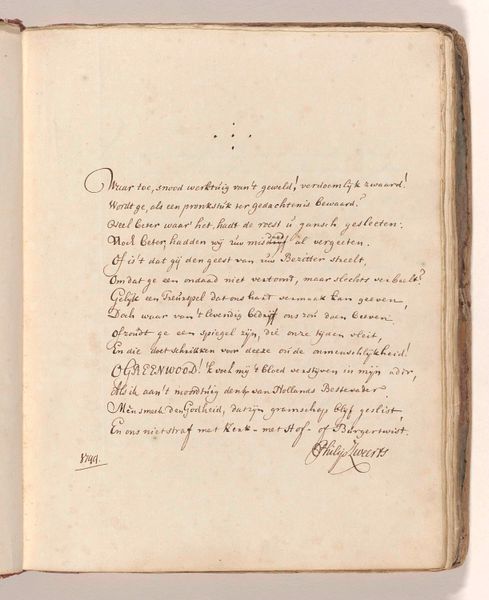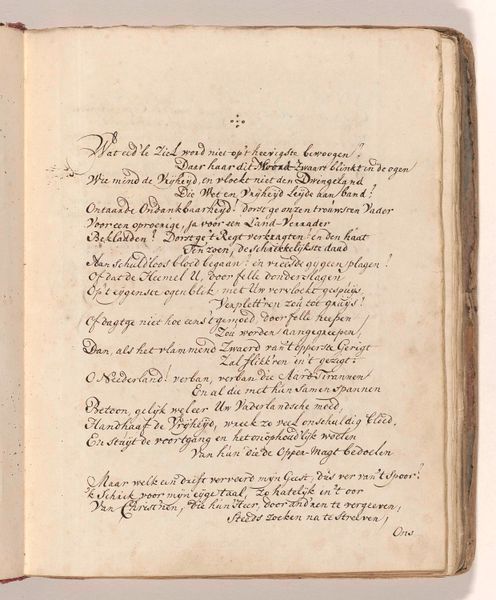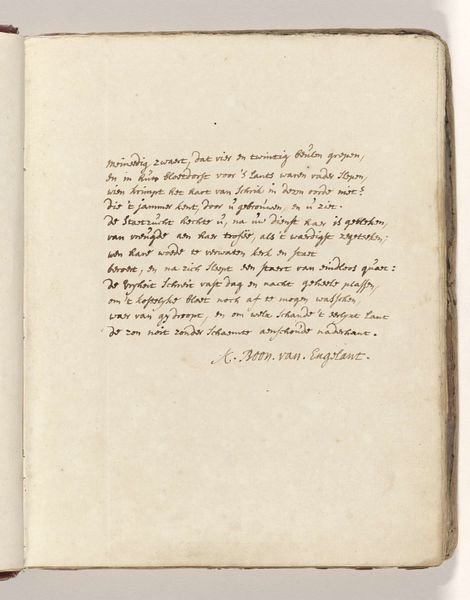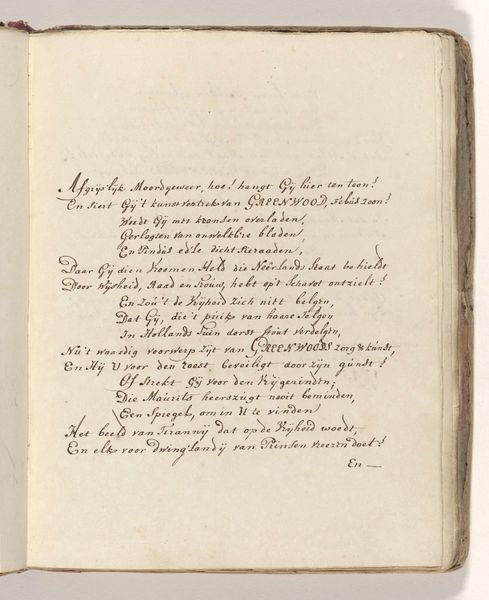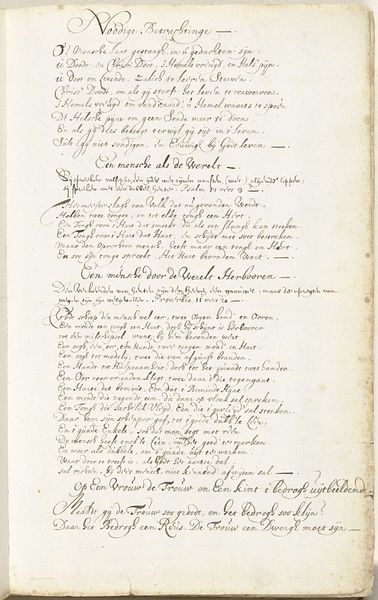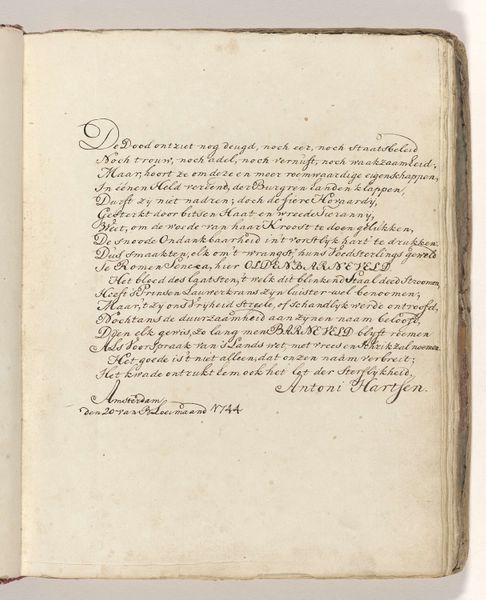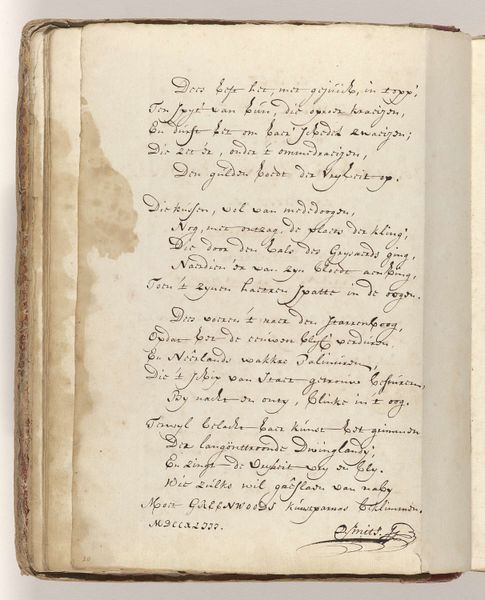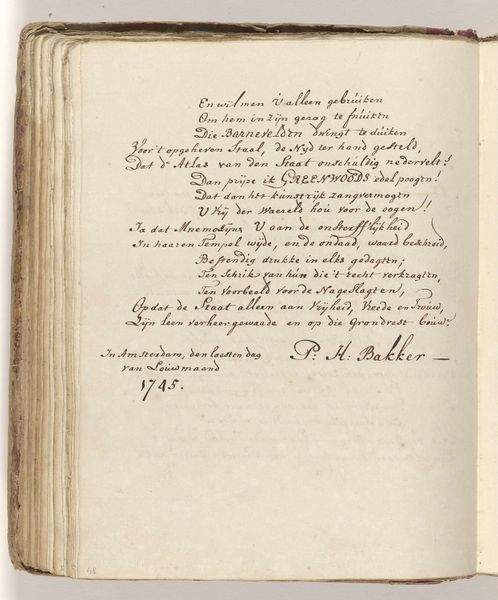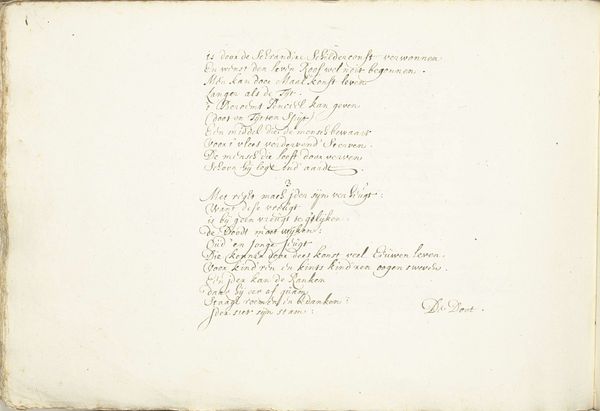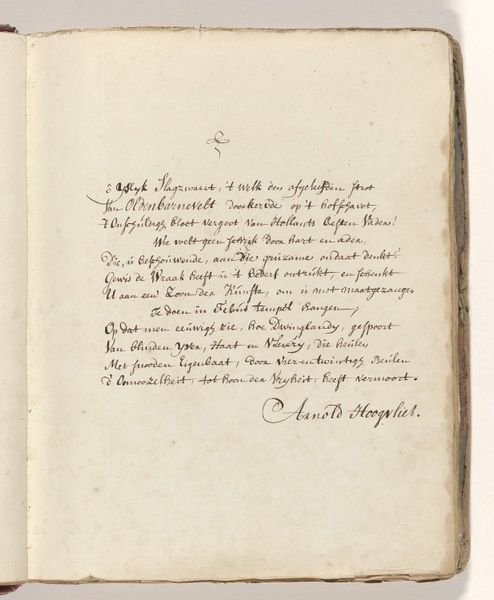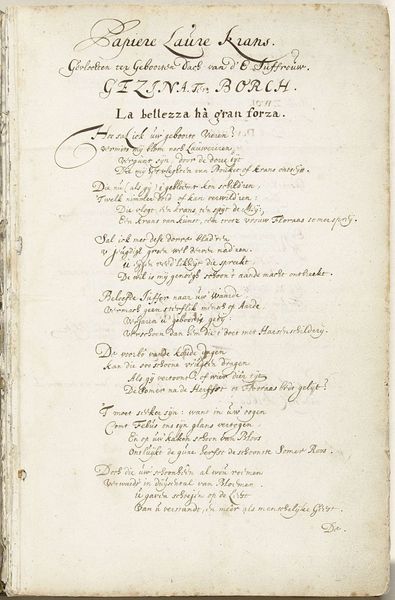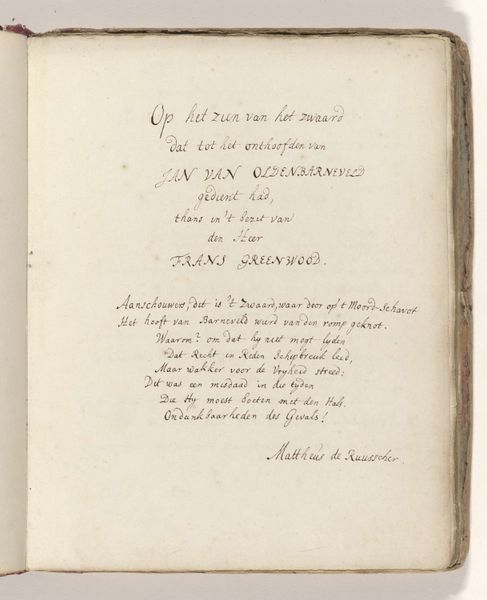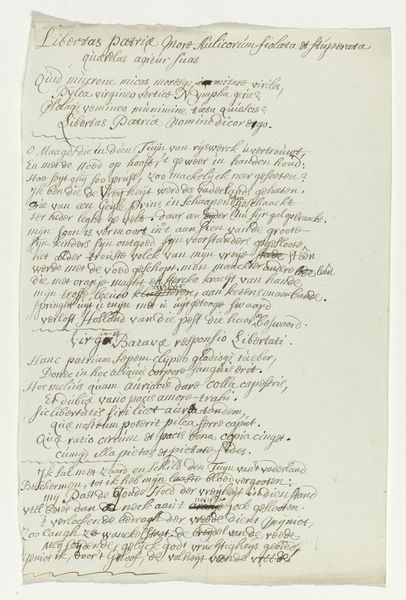
Gedicht op het zwaard waarmee Johan van Oldenbarnevelt in 1619 zou zijn onthoofd Possibly 1744 - 1748
0:00
0:00
Dimensions: height 275 mm, width 220 mm
Copyright: Rijks Museum: Open Domain
Curator: Here we have a fascinating object, cataloged as "Gedicht op het zwaard waarmee Johan van Oldenbarnevelt in 1619 zou zijn onthoofd"—roughly, "Poem on the sword with which Johan van Oldenbarnevelt was beheaded in 1619." It’s believed to be from the mid-18th century, attributed to Lambertus Paludanus, done with ink on paper. What's your immediate reaction to it? Editor: It feels somber. The handwriting, while elegant, has a weight to it. I suppose it’s the subject matter—a poem about an execution sword—but the whole presentation evokes a real sense of historical gravity, a deep melancholy. Curator: The materials themselves are interesting, right? Ink on paper gives it a kind of fragility, which seems to juxtapose strangely with the violent theme. The calligraphy is striking; it’s not just functional—it’s carefully considered, almost like another layer of meaning. Editor: Exactly. And look how the text fills the page. It’s dense, almost claustrophobic. Do you think the calligraphic style consciously emulates period handwriting of 1619, from the beheading of Oldenbarnevelt? Curator: Quite possibly. The artist likely wanted to imbue the poem with a tangible link to that era, a sense of authenticity, perhaps? Paludanus has captured a real feeling here, using form to amplify the poem’s message. Editor: There is a certain tension, isn't there? On one hand, the subject seems straightforward, an act of judicial brutality; on the other, the text transforms the sword into something more symbolic. A relic? A protest? The use of romanticism elevates it above just the literal, so that it transcends a simple document or illustration of this sad story. Curator: It becomes a meditation on justice, memory, and the weight of history, all bound up in a single artifact. Very striking and effective! Editor: Yes, it leaves one with a great sense of pathos for poor Johan van Oldenbarnevelt. Thank you for pointing out some nuances of this unusual work.
Comments
No comments
Be the first to comment and join the conversation on the ultimate creative platform.
